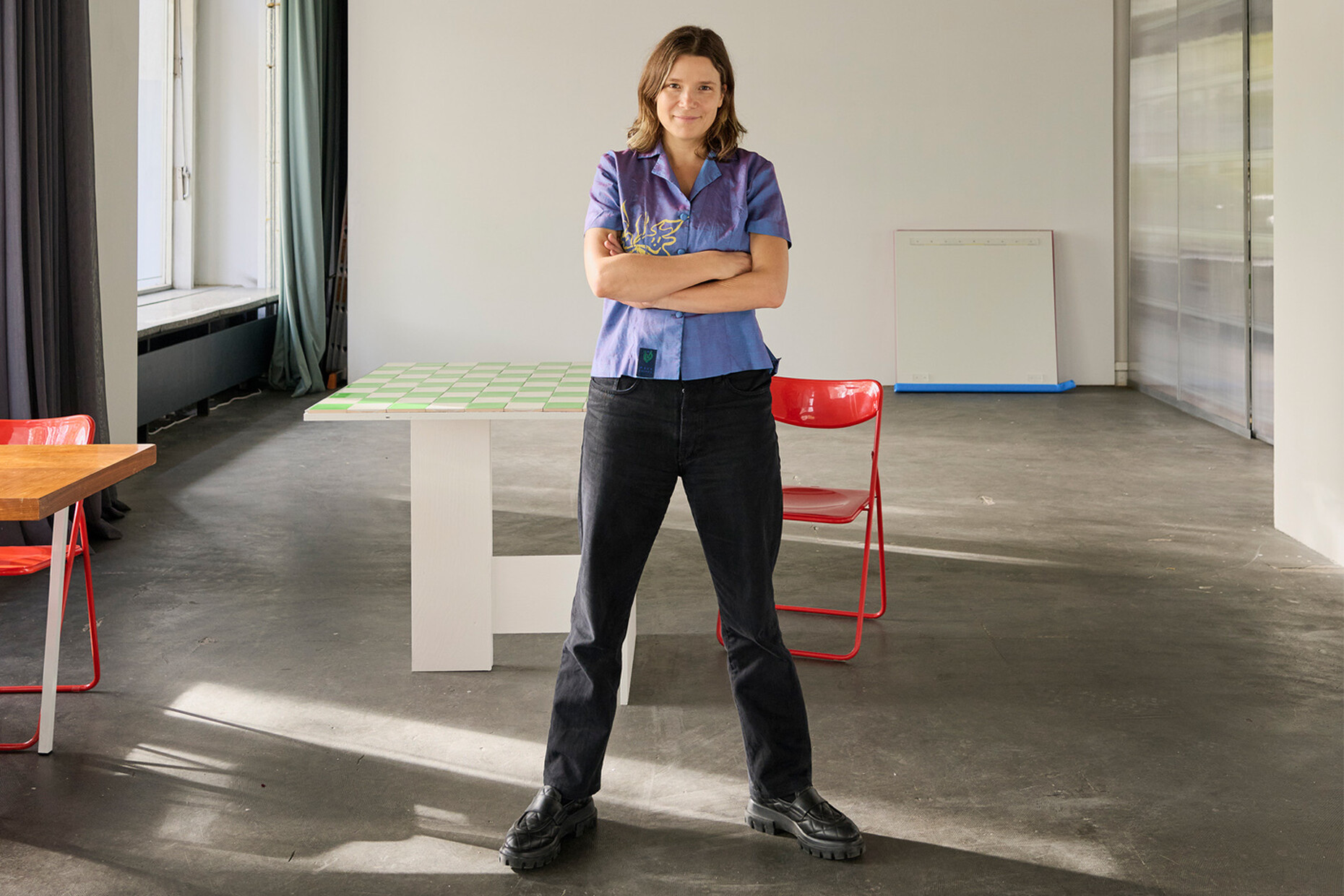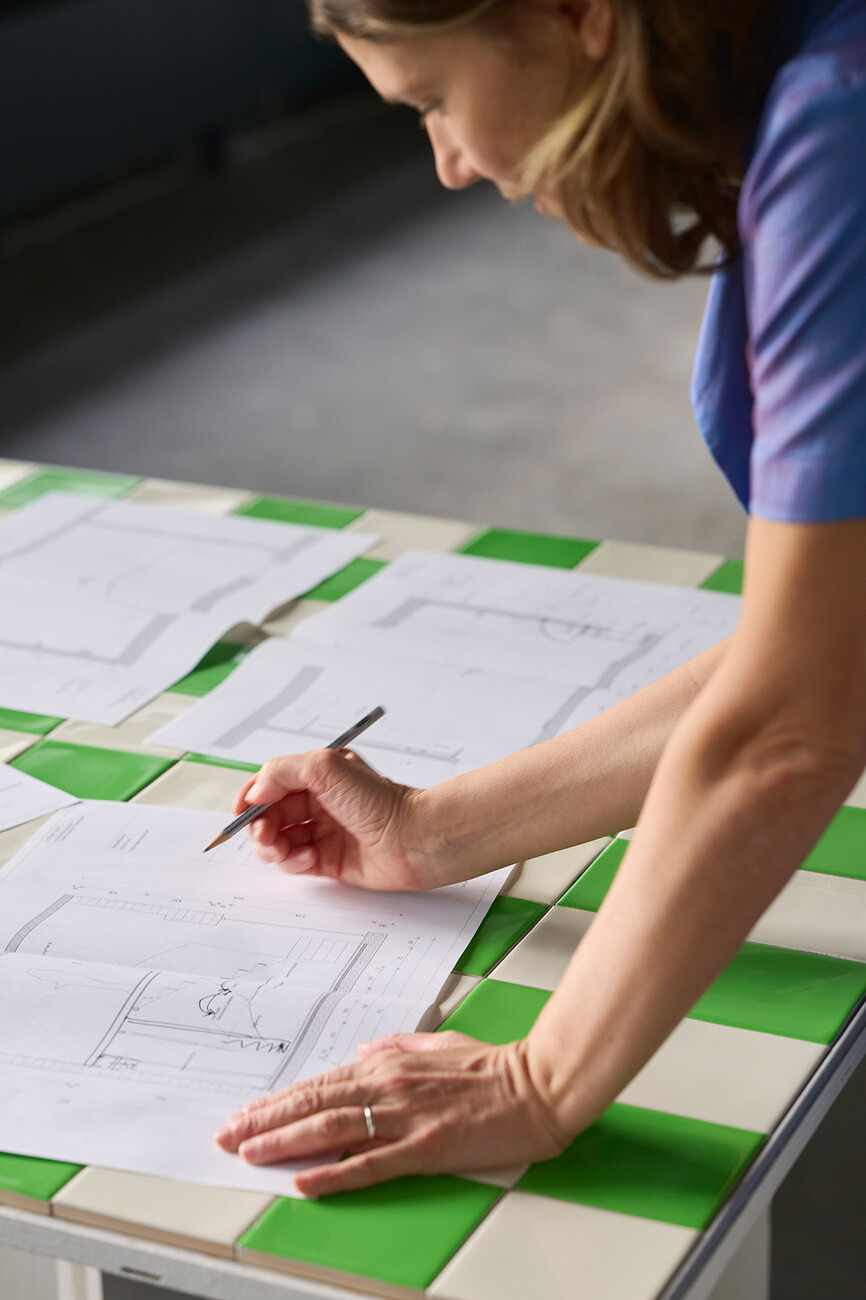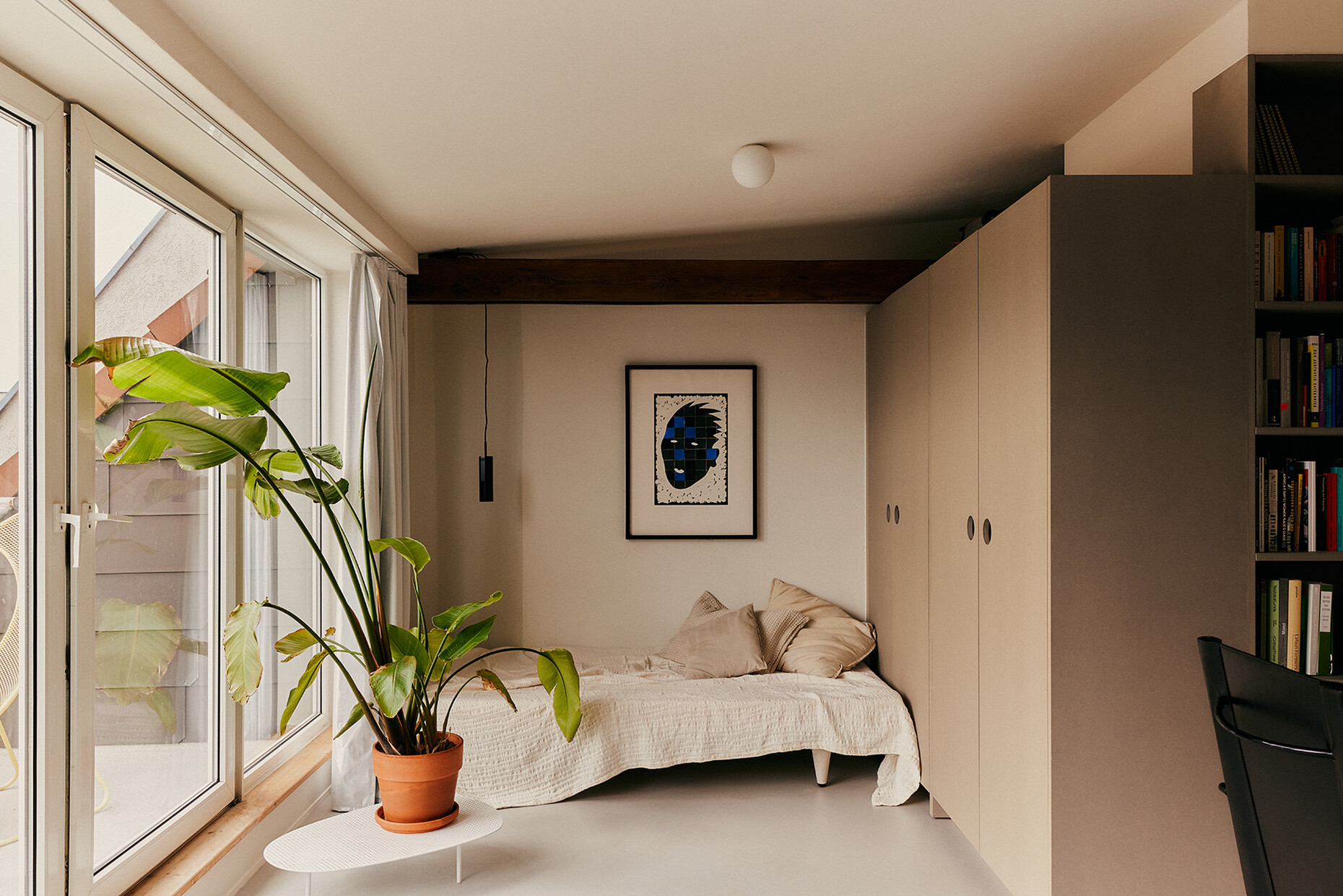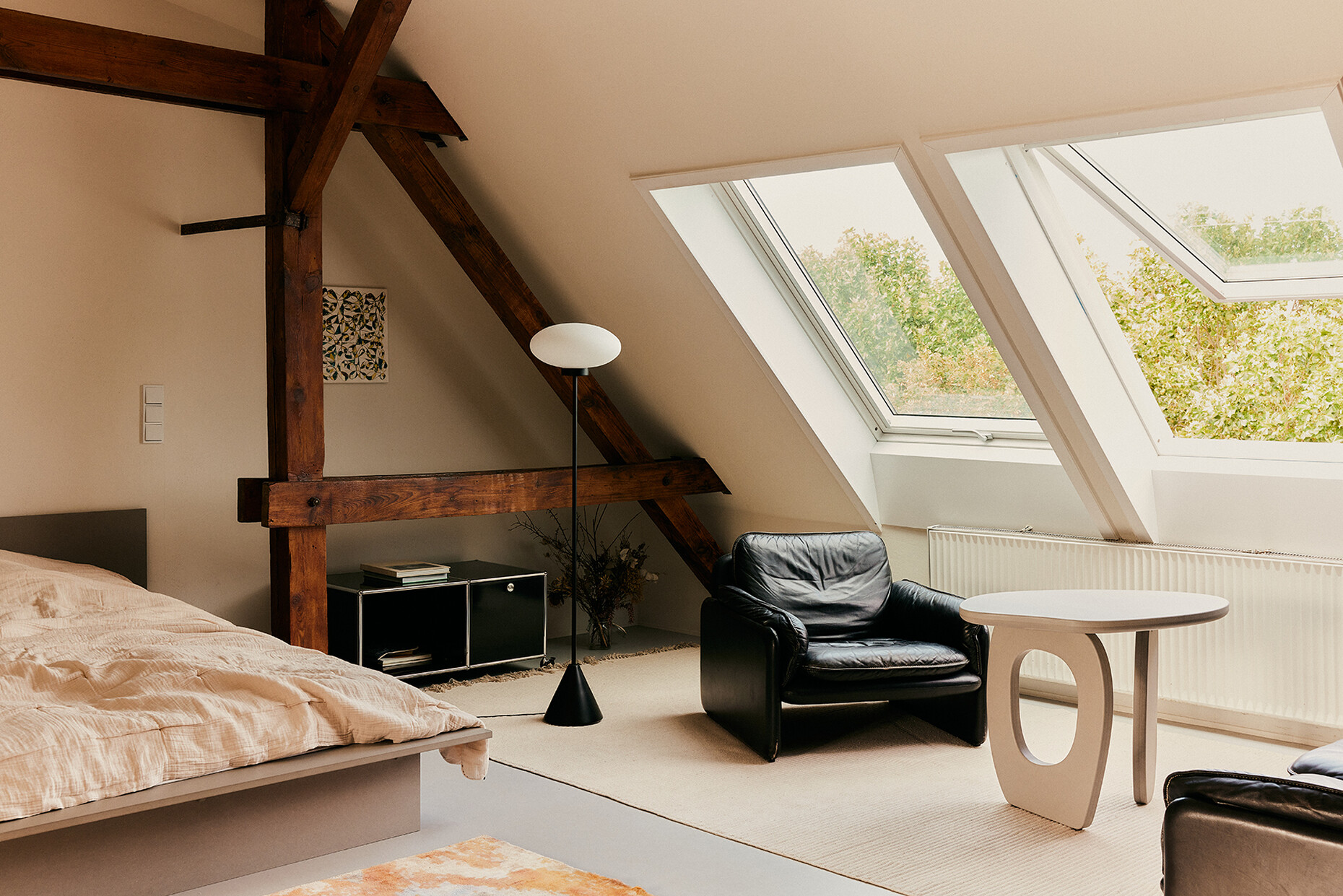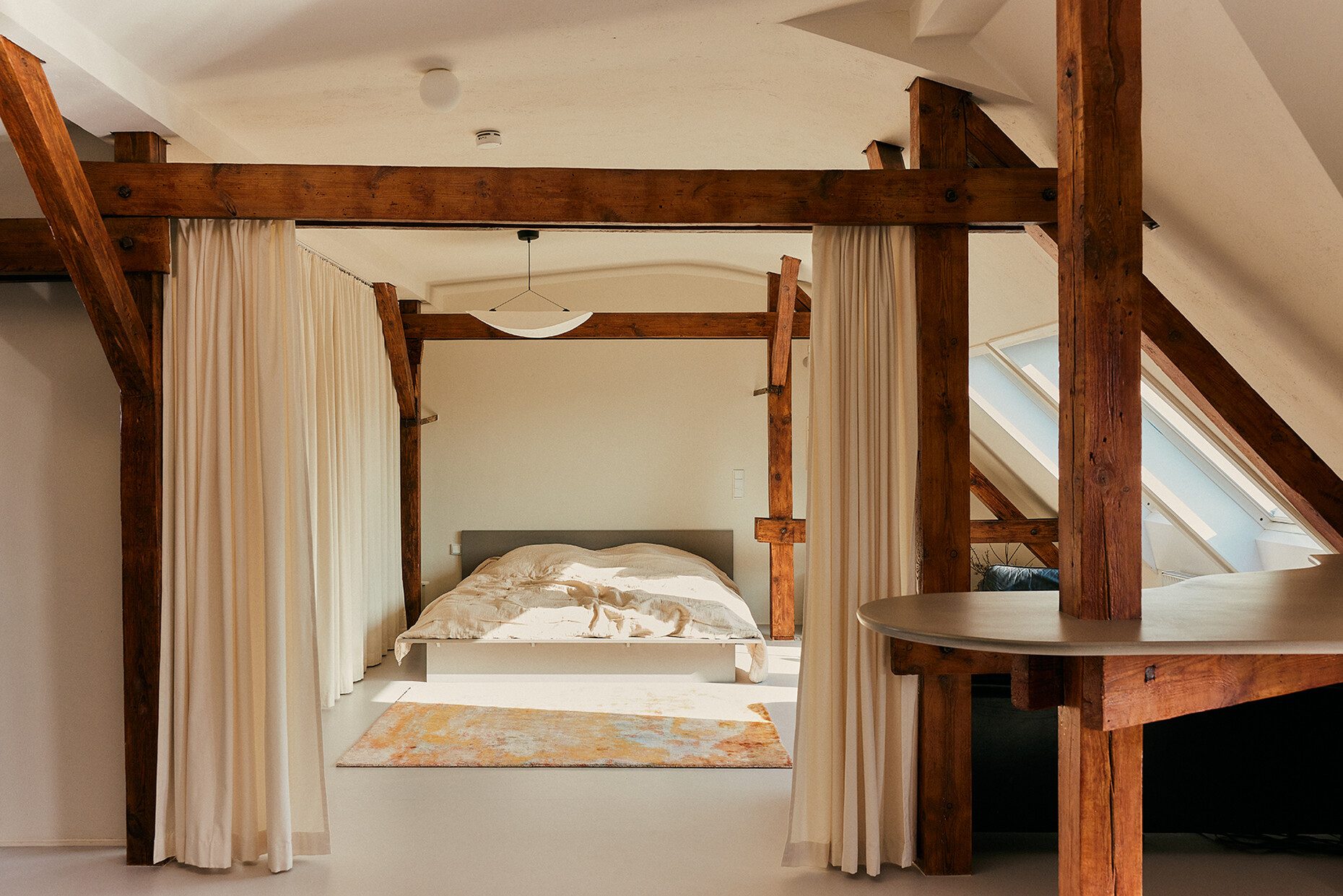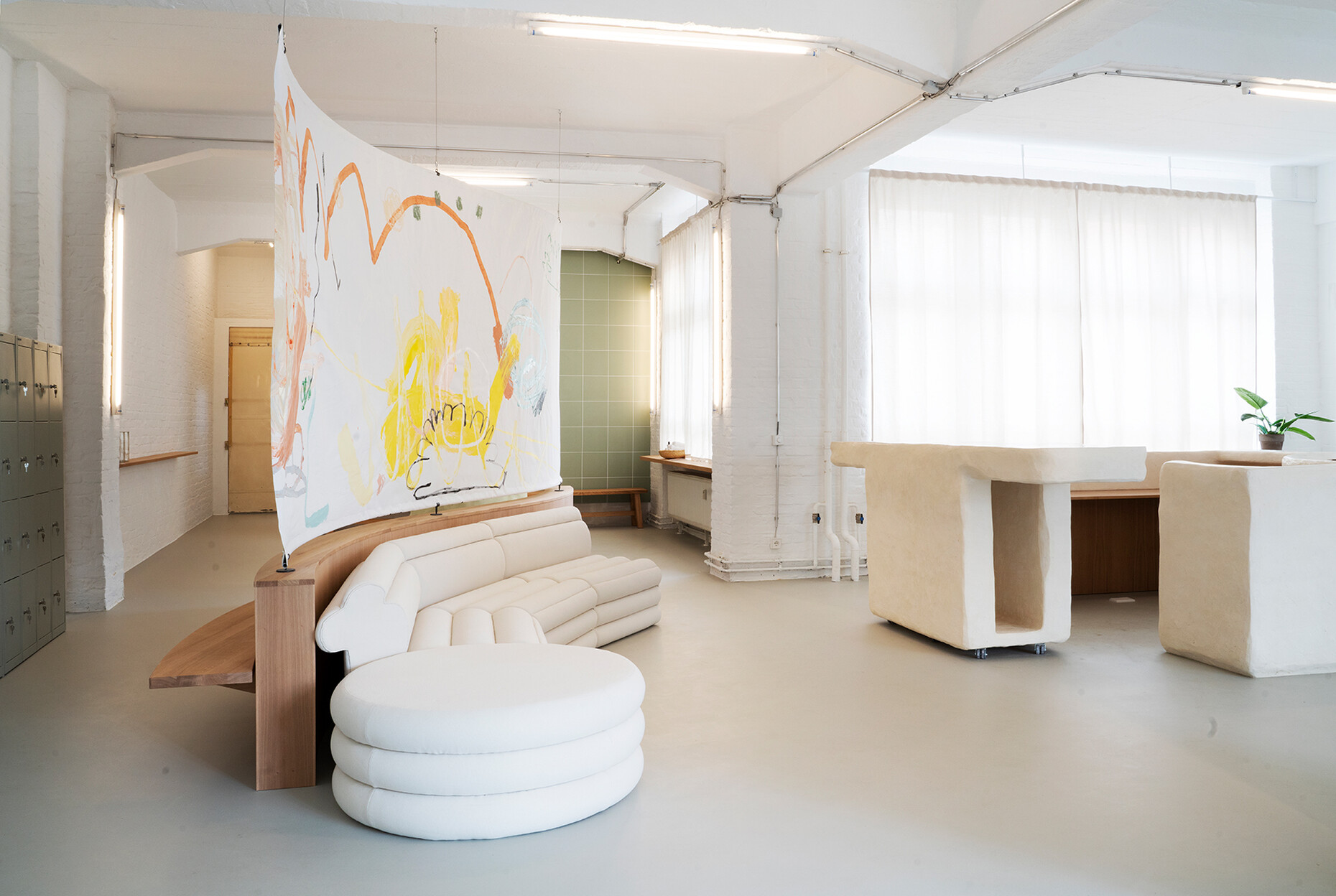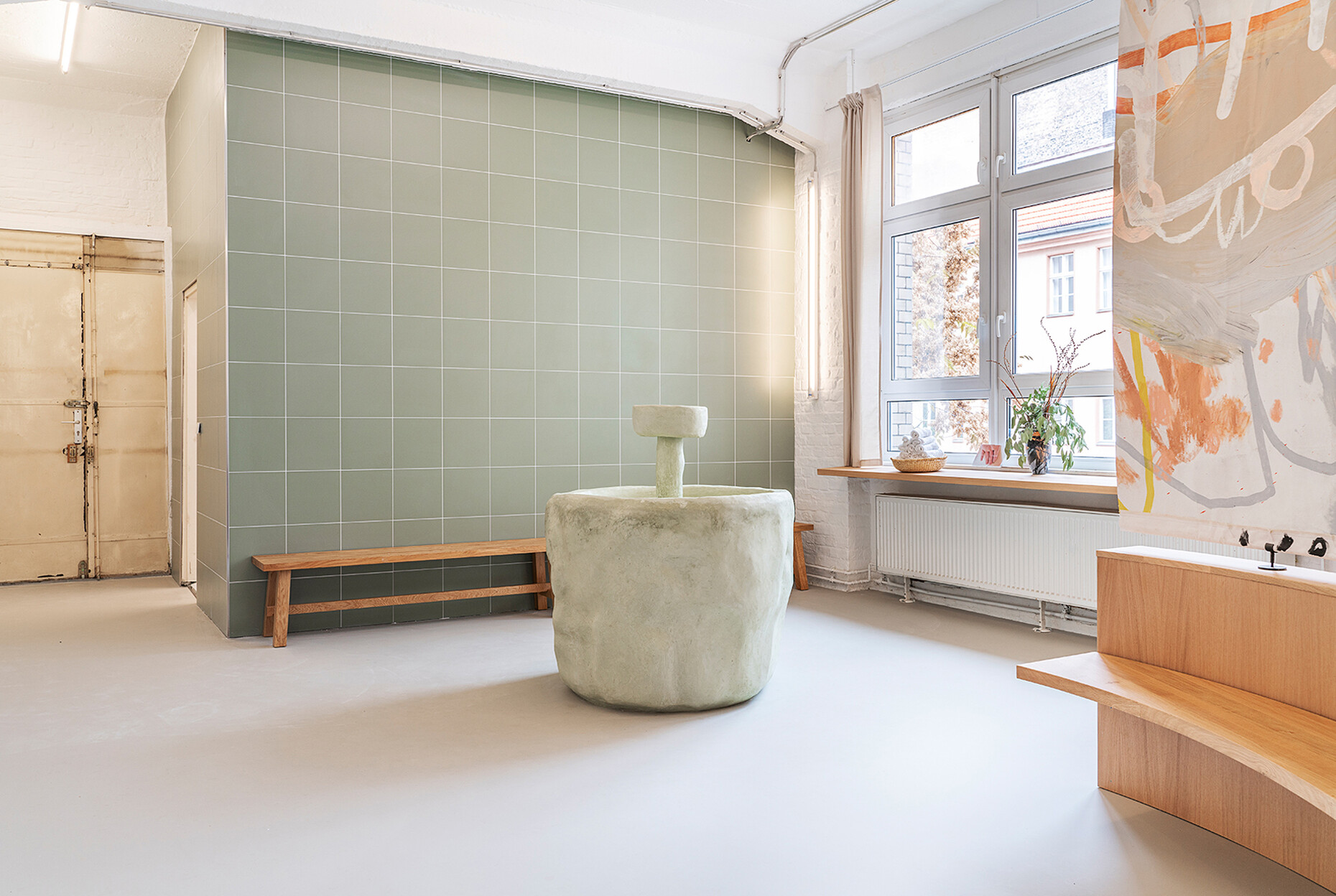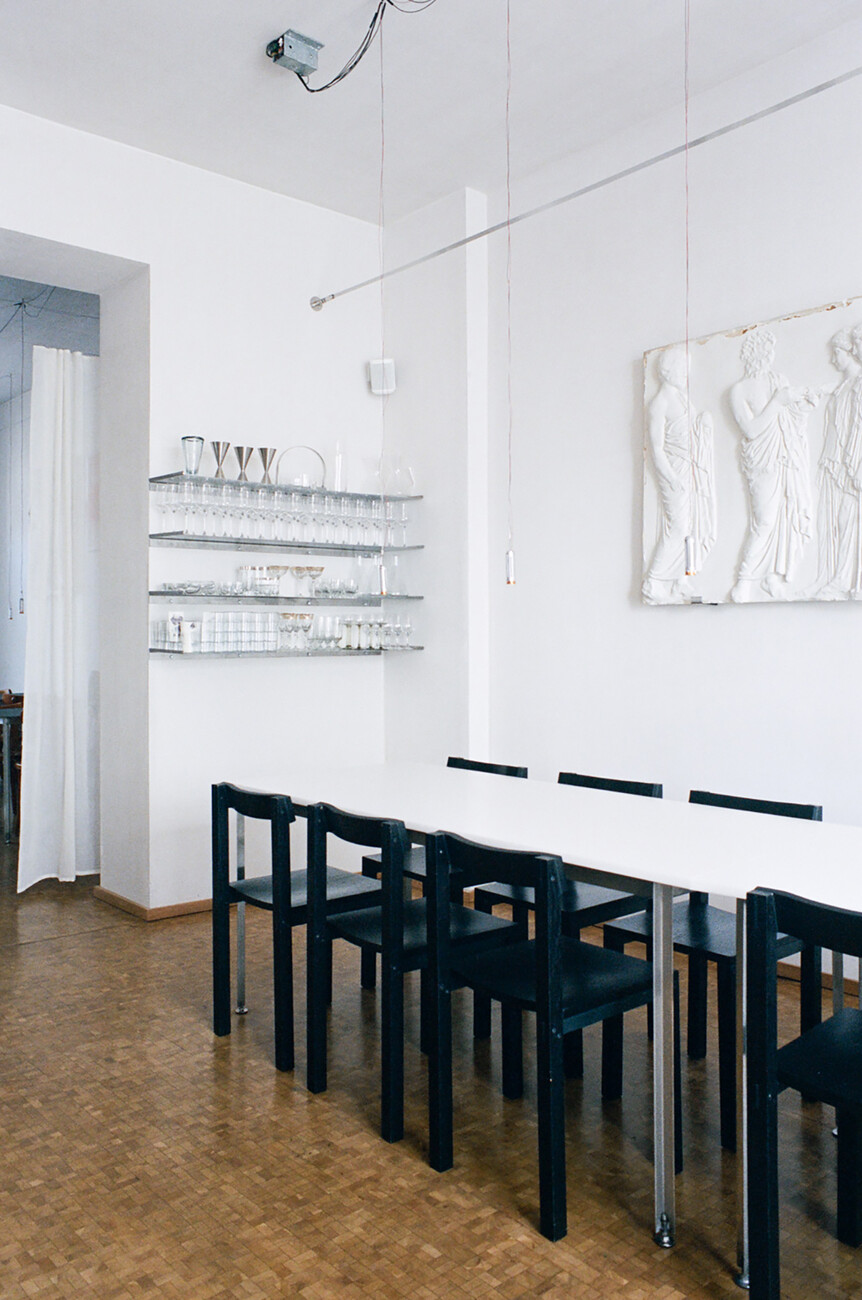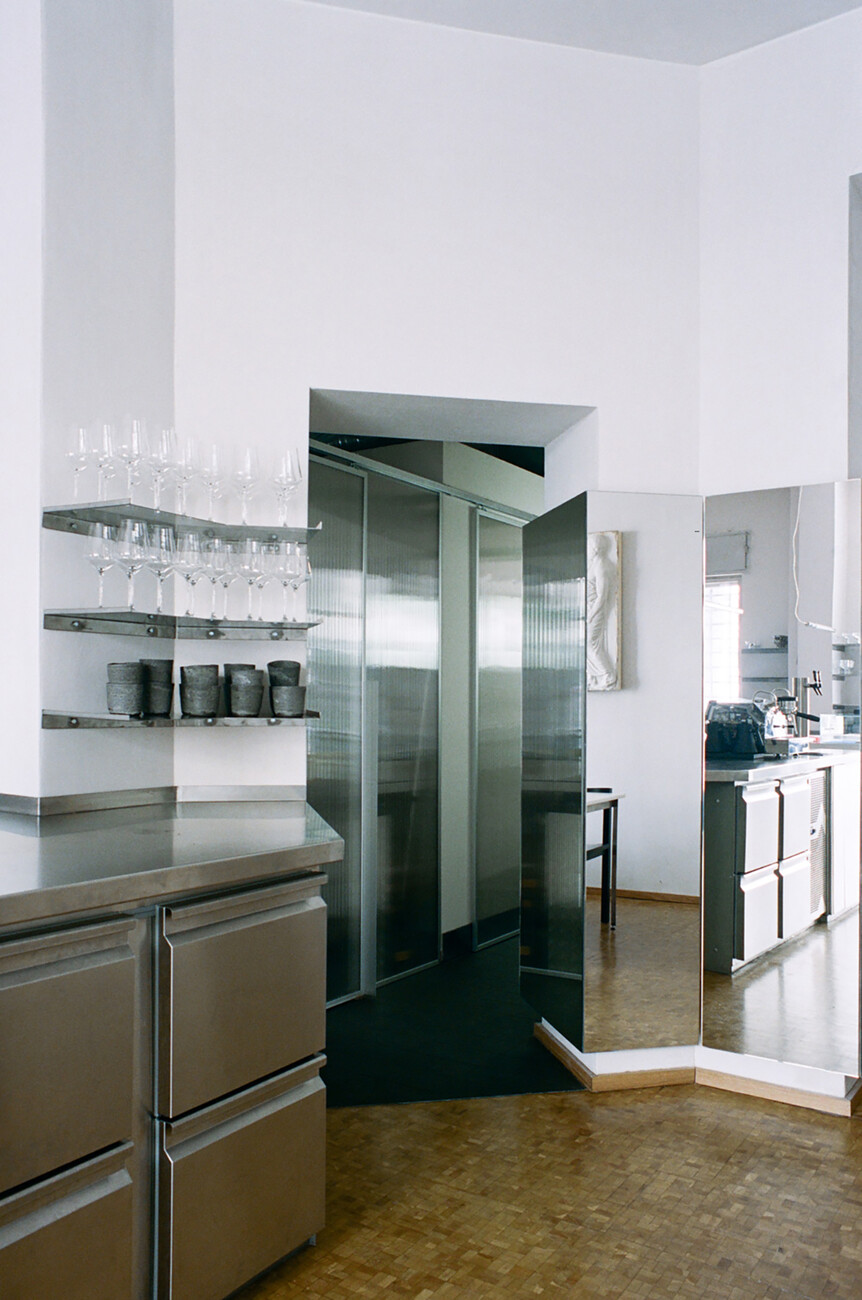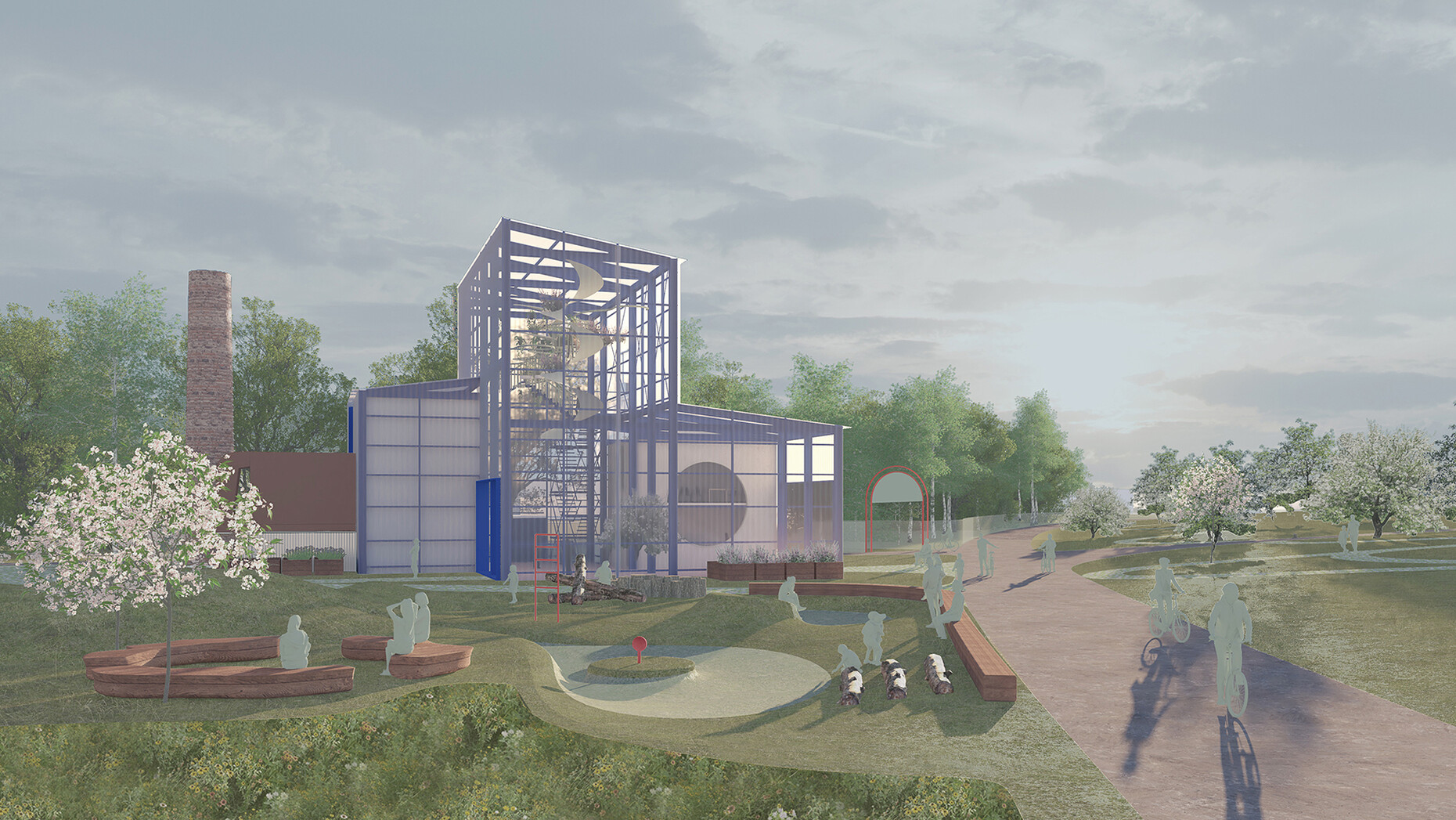Multiform
It is a gloomy November day in Berlin as we make our way to meet Bika Rebek, founder of Some Place Studio. Not far from Gendarmenmarkt, many architects and designers work in the former GDR prefabricated buildings on Leipziger Strasse. Among them is Bika Rebek, who moved from New York to Berlin a few years ago. She shares the high-ceilinged rooms with exposed concrete ceilings and wide ribbon windows with other creative professionals. Facing the street is a large gallery space – where exhibitions and events are sometimes held – while semi-transparent partition walls conceal work and conference rooms and a small kitchen.
Bika Rebek's life is full of exciting places and jobs. It is marked by upheavals and challenges – many of which she chose herself, seemingly without fear of taking risks. As a child, Rebek moved from Ljubljana to Vienna with her mother. Architecture was, in a sense, in her blood, as her grandfather Branko Rebek was a well-known architect and urban planner in the former Yugoslavia. Although she did not know him personally, the designer says, he and his work were often discussed at home, including cemetery chapels with sensational concrete shell constructions. Through her parents, she came into contact with the creative industry at an early age, as her mother worked as a journalist and her father as a director. Bika Rebek herself studied architecture at the University of Applied Arts in Vienna under Greg Lynn, after previously struggling with Wolf D. Prix's teaching. A good choice for acquiring practical knowledge, as she notes. However, she missed the critical (scientific) discourse that she would later find in the USA.
Land of opportunities
After graduating, Rebek fulfilled a dream and moved to New York on a scholarship. There she worked as an architect at Asymptote Architecture. Hani Rashid, one of the founders of the American architecture firm and a jury member at the University of Applied Arts in Vienna, had been impressed by her thesis. One might think this was a dream job, but Rebek did not feel entirely comfortable with the (large-scale) architectural projects in Asia. She felt she lacked a deeper understanding of architecture and its context. To deepen her theoretical knowledge and learn critical thinking and academic essay writing, she began studying again, this time in the Critical Curatorial Conceptual Practices in Architecture programme at Columbia University. After working there as a teaching assistant and running the Hot Air gallery in temporary spaces on the side, there was no going back to a conventional architecture firm. Having long since made New York her home, Rebek joined the Metropolitan Museum of Art as an exhibition designer, where she was involved in the redesign of the musical instrument department and the temporary Met Breuer museum. But the highlight, she says, was the exhibition ‘Manus × Machina: Fashion in an Age of Technology’ – in collaboration with OMA and with a budget of six million dollars.
Bika Rebek would not be Bika Rebek if she had rested on her laurels. She decided to set up her own office with Some Place Studio and left the Metropolitan Museum of Art. But then the coronavirus pandemic struck, calling her life in New York into question. Living alone in her small flat and the departure of many friends marked a turning point that ultimately led to a radical new beginning: moving to Europe. Rebek came to Berlin in 2021 and deliberately chose not to return to Vienna, which she found too sedate and provincial. Berlin, on the other hand, has exerted an almost mythical attraction on her since she did an internship at the Graft architecture firm in her early twenties, she says. Because of the city's roughness and its unbroken promise of possibilities. Where Vienna falls into ‘lovely-decadent’ comfort, she senses a productive tension and an unvarnished directness in Berlin that unleashes creative energy.
Rebek pursues a holistic approach to architecture that combines critical theory, exploratory exhibition design and a strong sense of social responsibility with practical implementation. She focuses on community, sustainability and location-specific concepts. This is also evident in the open, two-stage ideas competition for Tempelhofer Feld, which Some Place Studio recently won. The design deliberately avoids new construction and focuses on 32 previously unused existing buildings, which are to become meeting places for community initiatives. Together with landscape planners and resource managers, Some Pace Studio developed a sustainability concept that combines infiltration processes, ecological regeneration and careful landscape maintenance. The design sees Tempelhofer Feld as a resource, not as reserve space. Rebek also has a clear opinion on the related debate about the housing shortage in Berlin: Tempelhofer Feld is not suitable as a repair area for structural mistakes that have been made. Instead, the architect names alternatives that begin with the existing stock – in redensification, the transformation of existing buildings, but also on large, sealed residual areas of the city, which she counts, for example, as car parks or floor space above single-storey supermarkets.
Between urban planning and interior design
The projects undertaken by Some Place Studio are as diverse as the interests of its founder, ranging from urban planning issues to interior design projects. These include a coach house for a musician in Kreuzberg as well as a strategic focus on so-called wellness typologies – spaces for retreat, movement and tranquillity. Spas, yoga and Pilates studios, but also publicly accessible places that understand the topic of well-being not as a lifestyle, but as a spatial task.
The interiors designed by Some Place Studio often appear as if they have always been there. This is because Rebek usually works with existing buildings, taking into account the existing and original features of the location and incorporating them into the redesign. Her interiors are unpretentious, do not impose themselves on the viewer, yet always have that certain something extra. As in the Pars restaurant in Berlin-Charlottenburg, this can be a mirrored pillar that connects all the rooms, or the combination of antique-style reliefs from the previous project with contemporary works of art. Speaking of art, Some Place Studio sometimes collaborates with artists on specific projects, such as the Berlin yoga studio ‘Original Feelings,’ which has a minimalist yet inviting feel thanks to its muted colour palette and sparse furnishings. The materials and textures used are eye-catching design features – in the form of a custom-made reception desk and drinking fountain made of hemp concrete with pigmented lime plaster by Yasmin Bawa. And a large, painted privacy screen by Viennese artist Denise Rudolf Frank, which separates the lounge area from the changing rooms.
Rebek's penchant for unusual design solutions is also evident in the ‘Light Loft’ project, a converted attic apartment in Berlin. Here, a raised table winds around the existing columns, creating a bar area in a previously unused space. The kitchen furniture itself features a surprising combination of materials: recycled, semi-transparent acrylic fronts in a bold blue contrast with a stainless steel worktop.
Networks as a backbone
Bika Rebek works with a small core team and a network of freelancers – with the aim of growing organically and establishing an independent studio culture. Finding interesting projects has not been a problem so far, says the architect. Acquisition is done through recommendations, networks and social media such as Instagram – all channels that create proximity and at the same time filter what is actually brought to the studio. However, the 39-year-old adds that she cannot accept projects under £5,000 for economic reasons. She describes her work as multifaceted: building, thinking, writing, curating, teaching. These activities are interlinked and sharpen each other. In the Berlin co-working space and the associated gallery area, an environment has been created that facilitates exchange. With events such as ‘Berlin, what do you want from architecture?’, Rebek also opens her practice up to the urban space – as an invitation not only to talk about architecture, but to think about it further together.
